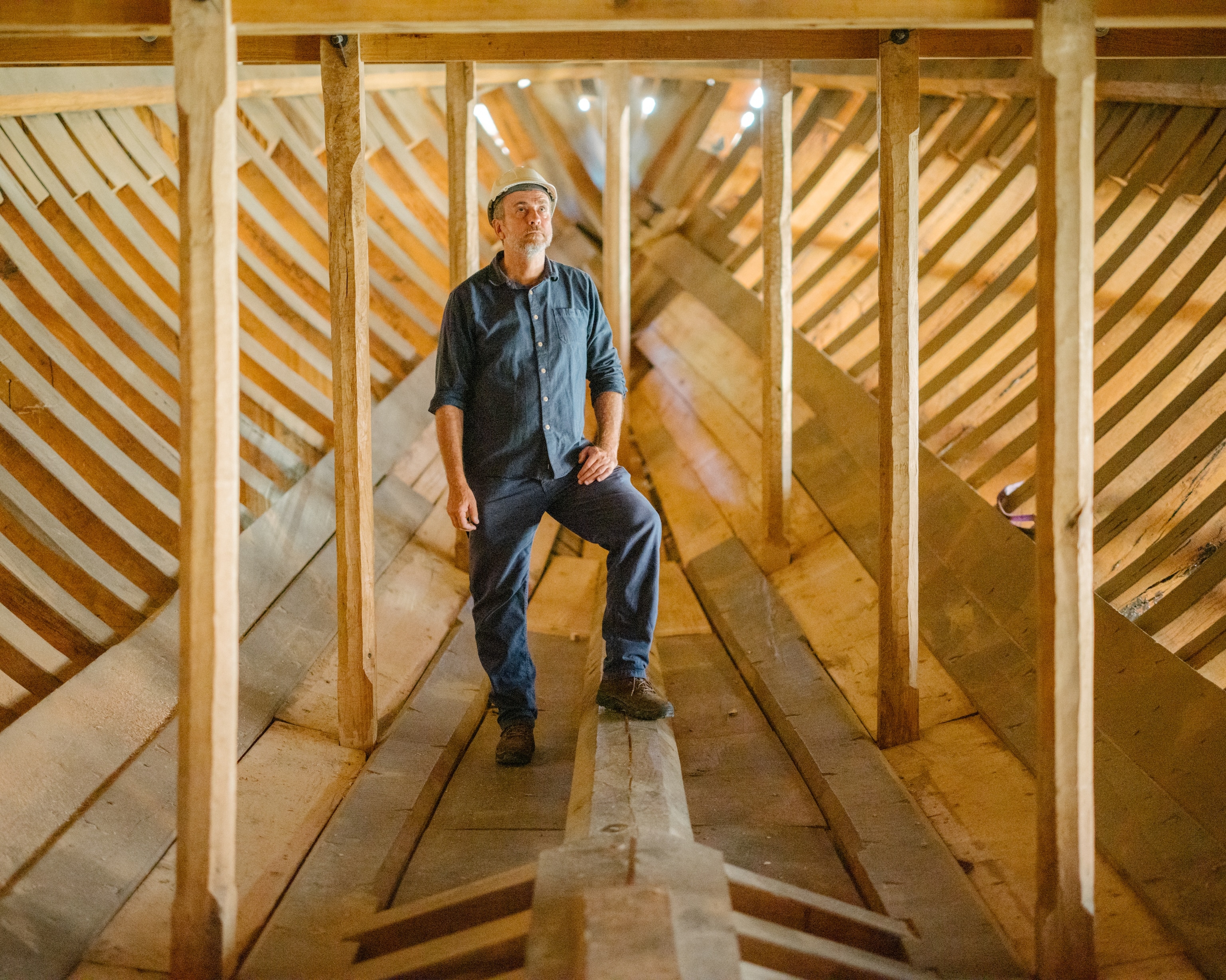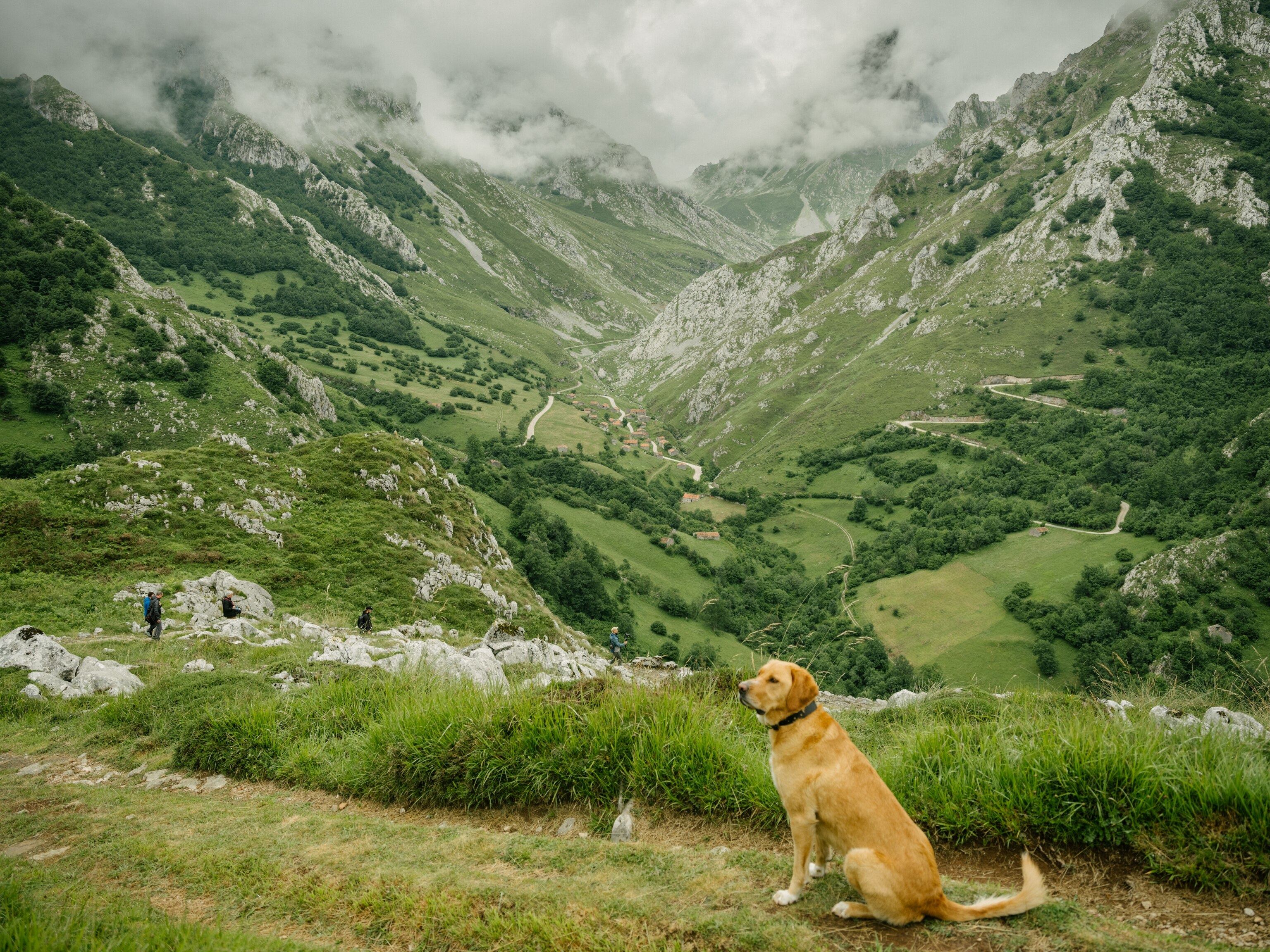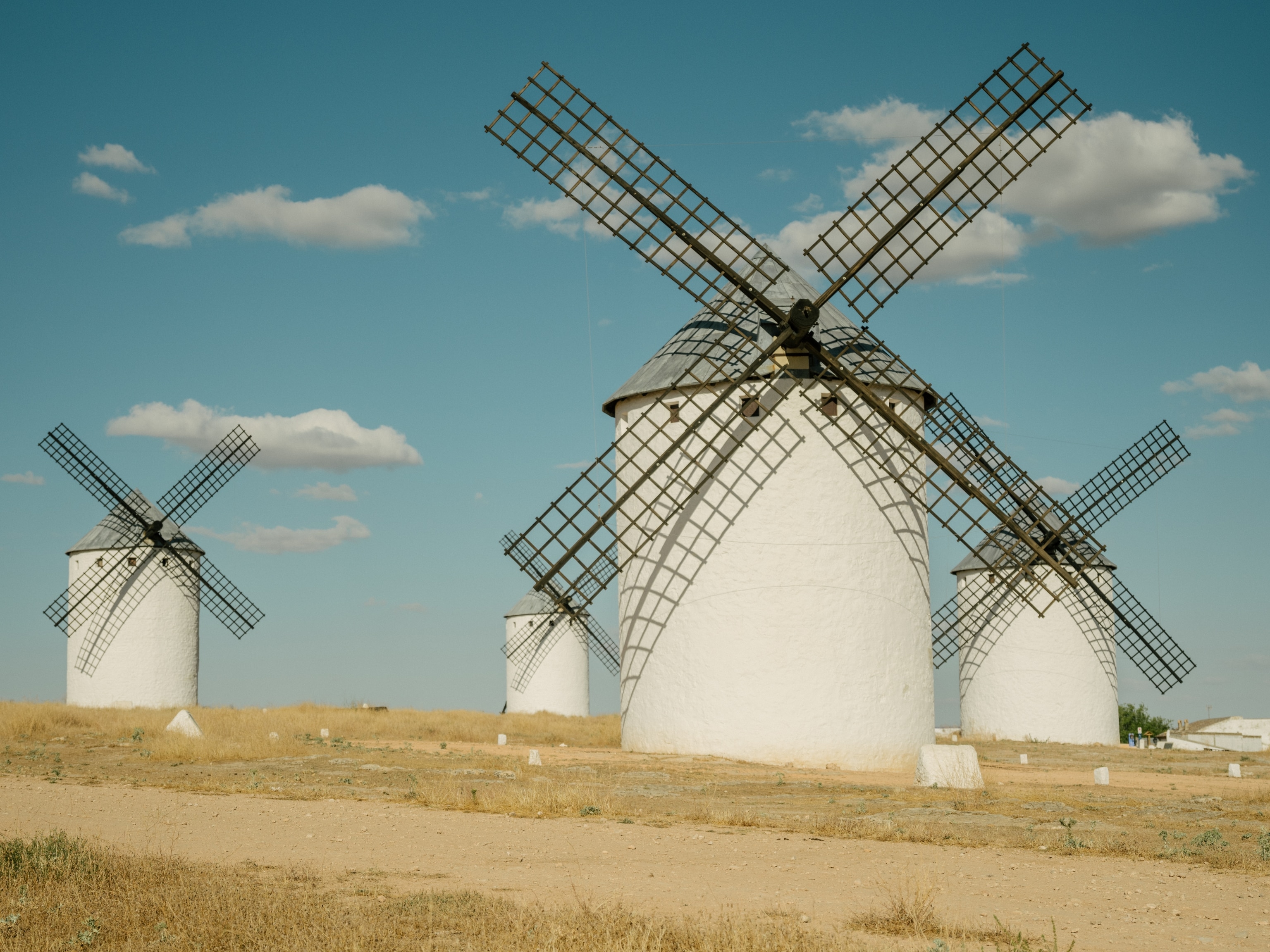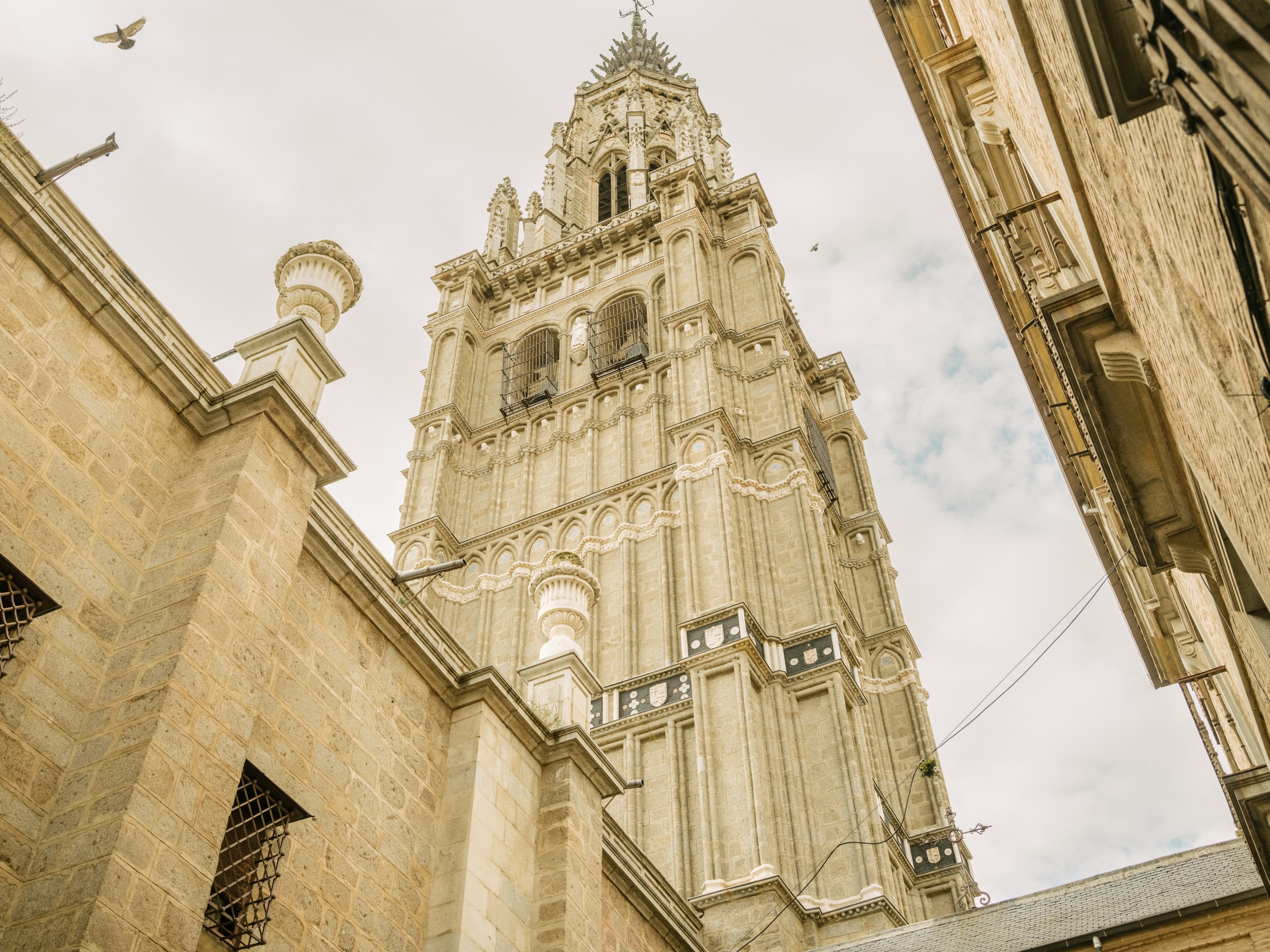Sailors, sirens, and surfers of the Basque Coast
Here on the Bay of Biscay, you’ll find fishing villages steeped in age-old Basque maritime culture, flourishing habitats for bird life, and one of Europe’s most rideable waves.
Her name is Xixili. She looks very much like a nymph, or a siren, or maybe a mermaid, though her tail ends in a pair of peculiar duck feet. There she sits on the breakwater at Bermeo, combing her hair and staring out over the Bay of Biscay atop the sculpted heads of three open-mouthed fishermen. This landmark 1980 statue by José Luis Butrón represents a prime specimen of a lamia―an ambiguous, amphibious creature from the watery mythology of the Basque Country.
Legends say lamiak once lived along this coast, as well as inland beside the region’s many rivers. The valley just above and behind Bermeo is called valley of Lamiaran, perhaps in fearful tribute. Some stories tell of lamiak helping, saving, or even marrying local fishermen, as Xixili herself was said to have done, while others of her kind were known to lure and drown sailors according to their whims. In that sense, the lamia is a perfect metaphor for the Cantabrian Sea, which has provided a livelihood for many generations of mariners from this port and others like it, while also cultivating legions of widows.

Much of this history is documented at the Fishermen’s Museum, which occupies Bermeo’s Gothic 15th-century Ercilla Tower that rises over the Old Town’s brightly painted houses. Here, you’ll see model ships and learn about the history of Basque shipbuilding and fishing that dates back centuries. Discoveries from the nearby Santimamiñe cave (which also allows guided tours) include nets, bone hooks, and stone picks for farming molluscs from the rocks found amid eerie galleries of Paleolithic charcoal paintings.
By the early Renaissance, local seafarers had built an empire on sturdy wooden vessels that ranged across the Atlantic to Canada for cod. Ferdinand Magellan took more than 30 Basque crew members aboard his five ships, including three Basque-built vessels, when he embarked on his fateful round-the-world voyage in 1519. Juan Sebastián Elcano, captain of the Concepción, was from Getaria, and Juan de Acurio, a boatswain on the Concepción from Bermeo, were among the few to survive, and thus the first to circumnavigate the globe. (Elcano took command of the expedition―and the sole surviving ship, the Victoria―when Magellan was killed).

If their respective home ports don’t look quite the same half a millennium later, there are ongoing efforts to protect or restore the land and seascape between them. Bermeo is now a gateway to the vast Urdaibai Biosphere Reserve, a tidal zone where the Oka River flows out through a wide estuary flanked by woods and wetlands. Previously, wetlands had been largely drained and degraded, and a once thriving ecosystem was deserted, but dykes and other barriers have been removed to allow water to flow once more into the marshes. These restoration efforts have returned the area to abundant life—native plants are flourishing once again, and birds are flocking back.
“Biodiversity has increased massively, from about 100 species to about 225,” says Rowan Hardman, a British Council coordinator who works closely with the Urdaibai Bird Center. The organization opened its doors as a nonprofit in 2012, and now hosts visitors at a state-of-the-art museum and observation platform overlooking the marshland. “We’re seeing birds that were never here before. Garganeys, grebes, ospreys … Some, like pochards, are breeding here now.”
Her personal favorite is the spoonbill. “They’re big, white, and dramatic, but also so calm and static. They’re always just sleeping, or quietly preening their feathers. They reflect how this marsh has become a peaceful haven for them.” The reserve is a critical stopover site for spoonbills and other migratory guests, like the purple heron, that touch down here en route to or from Africa. Coming from the south coast of England , Hardman has heard the stories here about lamiak, but she’s a little more attuned to local bird-related myths.
“Well, they say swallows bring good luck, so you should never destroy their nests. There’s some religious element to that, I think, because the color of their feathers is associated with the Virgin Mary.” Indeed, ancestral voices tend to claim that the lamia retreated from this area as Christianity spread through it, their ears sensitive to the echoes of chapel bells in the wilderness.
That same sound brought fisherfolk luck and comfort. On summer feast days, processions of pilgrims from Bermeo, Bakio, or Arrieta cross the long stone bridge to San Juan de Gaztelugatxe, climb the 241 steps (one step is said to be imprinted with the footprint of John the Baptist himself), and ring the church bell at the top three times. Ringing the bell is said to bring good luck and protect against evil, especially for those brave souls who work at sea.

A certain cheerful paganism persists, though, especially at carnival time in neighboring Mundaka (easily reached on a scenic coastal trail across the Lamiaran Valley). On that Sunday in February, the men of the village dress as atorrak, in white lace-embroidered sheets and pillowcases inspired by the saucy legend of an adulterer’s makeshift disguise. The women, meanwhile, become lamiak: spectral figures in black dresses, white wigs, and two-tone makeup.
“It’s always fun,” says local-born surf instructor Gaizka San Justo. “Drinking, eating, singing all day.” San Justo’s father is a fisherman, and he was raised on tales of the lamiak. In his experience, surfers can be as superstitious as trawler captains, but they revere and fear the sea in cosmically different ways.
“When we look out there, we always want the big wave. And the fisherman, he doesn’t.” As it happens, the surfing at Mundaka is world-class, the tide interacting with estuary currents to create near-optimal conditions. When dredging by developers began to affect sand and water levels, a campaign led by the Surf & Nature Alliance managed to block such activity, and secure unprededented legal protection for the left-breaking wave as a part of the Urdaibai Biosphere in 2016. Now the break is back to full strength, says San Justo, as “one of the best ‘lefts’ in Europe.”
“It has a lot of power, forms an excellent barrel, and makes a very long wave that you can ride for maybe one minute 30.” Not if you’re a beginner, he admits, though he’d be happy to teach you how at his Mundaka Barra Surf School. Or you could charter a boat and sail in the opposite direction, past the break and out into the Bay of Biscay, to fish for sea bass or tuna on the silvery trails that Basque mariners have followed offshore for centuries.
Find more Spanish legends here.


